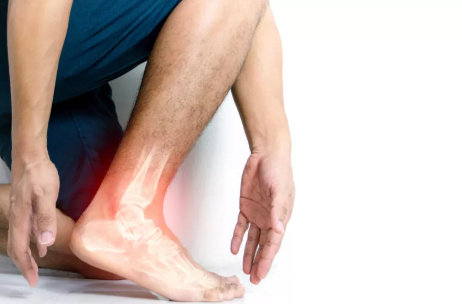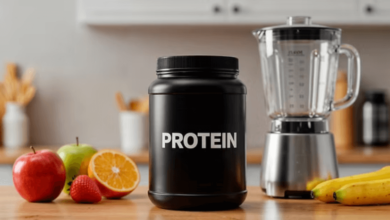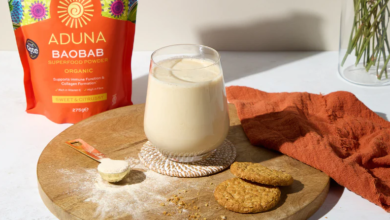The Science Behind Heat and Cold Therapy for Pain Relief

Pain, whether from an injury, arthritis, muscle strain, or chronic condition, can interrupt daily life in ways that go beyond physical discomfort. While modern medicine offers a variety of treatments—from medications to targeted physiotherapy—two of the simplest, oldest, and most accessible remedies remain heat therapy and cold therapy. Understanding when and how to use them can make the difference between prolonged discomfort and faster recovery.
Why Heat and Cold Work Differently
Heat therapy and cold therapy operate on opposite principles, yet both help reduce pain by affecting blood flow, inflammation, and nerve activity.
- Heat therapy dilates blood vessels, improving circulation. This brings more oxygen and nutrients to the affected tissues while helping muscles relax. Heat is ideal for easing stiffness, chronic muscle pain, and tension.
- Cold therapy constricts blood vessels, slowing circulation to reduce inflammation and swelling. It also numbs nerve endings, dulling the sensation of pain. Cold is best for acute injuries, swelling, or sudden flare-ups.
Think of heat as a muscle relaxer and cold as a swelling reducer. The challenge is knowing which to use, and when.
When to Use Heat Therapy
Heat therapy comes in two forms:
- Dry heat (heating pads, hot water bottles, heat packs)
- Moist heat (warm baths, steamed towels)
Both are effective, but moist heat can penetrate deeper into tissues, providing longer-lasting relief.
Best used for:
- Chronic muscle pain or spasms
- Stiff joints due to arthritis
- Soreness from overuse (after the inflammation stage has passed)
- Lower back tension
- Neck stiffness from posture strain
The science: Applying heat boosts local blood circulation, which helps flush out metabolic waste (like lactic acid) that builds up in tense muscles. It also triggers thermoreceptors in the skin that block pain signals to the brain—a principle known as the “gate control theory” of pain.
Pro tip: Pair heat therapy with a topical pain relief gel containing warming agents like capsaicin for a deeper, more prolonged soothing effect.
When to Use Cold Therapy
Cold therapy options include:
- Ice packs or cold compresses
- Ice baths
- Cooling pain relief sprays
- Gel packs stored in the freezer
Best used for:
- Fresh injuries (within the first 48 hours)
- Swelling and inflammation from sprains, strains, or bruises
- Tendonitis flare-ups
- Sports-related knocks and bumps
The science: Cold slows nerve conduction, reducing the brain’s perception of pain. It also limits fluid buildup in injured tissue, keeping swelling under control. This can be particularly helpful right after an accident or intense workout to prevent excessive inflammation.
Pro tip: For a more targeted approach, use a cooling pain relief spray—its quick-drying formula allows you to cover awkward spots (like between joints) without the mess of melting ice.
Read Also: Streamlining Healthcare Services for Better Patient Support
The “Switching” Method: Heat and Cold Together
For certain injuries, alternating between heat and cold—called contrast therapy—can speed up recovery. The cold phase reduces swelling, while the heat phase encourages nutrient-rich blood flow to repair tissues. This is often used in sports rehabilitation for muscle injuries that have both inflammation and stiffness.
Example:
- First 24–48 hours: Cold therapy to control swelling
- After swelling subsides: Alternate heat and cold to restore movement and relieve residual pain
How Long to Apply
Overuse of either therapy can lead to skin irritation or even tissue damage. A general guideline is:
- Heat: 15–20 minutes per session
- Cold: 10–15 minutes per session
Always give your skin time to return to normal temperature between applications.
Common Mistakes to Avoid
- Applying heat too soon after an acute injury—this can worsen swelling.
- Using cold for too long, leading to frostbite or skin damage.
- Applying either therapy directly to bare skin without a barrier (cloth, towel, or cover).
- Ignoring underlying health issues—if pain persists for more than a week or two, consult a doctor.
The Role of Supporting Nutrition in Recovery
While heat and cold therapy target external symptoms, recovery also depends on what’s happening inside your body. Muscle repair, tissue healing, and inflammation control are all influenced by diet and nutrition.
Why nutrition matters for pain relief:
- Vitamins and minerals like vitamin C, vitamin D, magnesium, and zinc support tissue repair and reduce inflammation.
- Antioxidants from fruits and vegetables fight oxidative stress, which can worsen chronic pain.
- Protein helps rebuild damaged muscle fibers.
If your diet falls short, consider supplements like multivitamin gummies. These are an easy, convenient way to ensure your body has the nutrients it needs for recovery, especially if pain limits your ability to prepare balanced meals.
Modern Pain Relief Options
For those seeking more immediate comfort, topical solutions like pain relief gel and pain relief spray can work alongside heat and cold therapy.
- Pain relief gel often contains cooling menthol or warming capsaicin, delivering targeted relief without the side effects of oral medications.
- Pain relief spray is ideal for quick application on the go, reaching spots you can’t easily massage.
These options don’t replace heat or cold but can complement them, providing ongoing comfort between sessions.
Final Thoughts
Heat and cold therapy are more than just “grandma’s remedies.” They’re backed by science, easy to apply at home, and effective for a range of aches, injuries, and chronic conditions. The key is timing—cold for fresh injuries and inflammation, heat for stiffness and long-term relief, and a combination for certain recovery stages.
Supporting these external treatments with good nutrition—possibly aided by multivitamin gummies—and targeted topicals like pain relief gel or pain relief spray can create a complete recovery strategy. With the right approach, you can ease discomfort, speed up healing, and get back to doing what you love, sooner.





